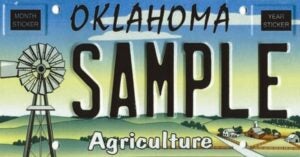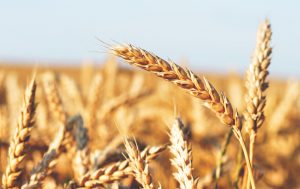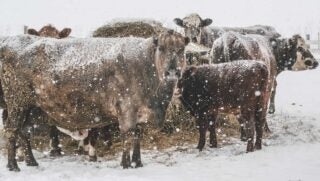Oklahoma’s agricultural industry is diverse and significant, contributing substantially to the state’s economy and cultural heritage. With its vast expanses of fertile land, diverse climate zones, and abundant natural resources, Oklahoma supports a wide range of agricultural activities, from cattle ranching and poultry production to wheat farming and cotton cultivation.
With its signature rolling hills and farm scene, the Oklahoma Ag Tag is a specialty license plate celebrating Oklahoma agriculture. While the plate certainly helps to promote agricultural awareness on the roads, it also allows those who purchase it to contribute to Oklahoma Ag in the Classroom.
Ag in the Classroom in Oklahoma is a joint project of the Oklahoma State Department of Agriculture, Food and Forestry, the Oklahoma Cooperative Extension Service, and the Oklahoma State Department of Education. The program serves pre-K through 12th-grade students by building agricultural literacy in the classroom with a specialized curriculum.
The Oklahoma Ag Tag costs $38 for a new tag and $36.50 for a renewal. Ultimately, $20 of the tag’s price goes directly to the Oklahoma Ag in the Classroom program.

The Sooner State is home to 70,378 agricultural operations, with nearly 33 million acres dedicated to farming and ranching. As of the 2022 Census of Agriculture, Oklahoma was harvesting 10.8 million acres of cropland, while over 4.5 million acres were dedicated to grazing and feeding cattle.
Cattle, hogs, hay, broilers, wheat, and cotton are the top agricultural products produced in Oklahoma. The state also raises corn, soybeans, milk, eggs, sorghum, peanuts, pecans, and more.
The cattle industry, however, is one of the most iconic aspects of Oklahoma’s agricultural landscape. The state is home to approximately 5 million head of cattle, making it one of the leading beef-producing states in the nation. Cattle ranching has a long history in Oklahoma, dating back to the days of the open range and the Chisholm Trail. Today, modern ranching practices and technologies have helped make Oklahoma’s beef industry more efficient and productive.
In addition to cattle, Oklahoma is also a major producer of wheat. The state’s wheat fields cover millions of acres and produce hundreds of millions of bushels of grain each year. Oklahoma’s wheat is renowned for its quality and is used in various products, from bread and pasta to livestock feed and ethanol production.

Poultry production is another important sector of Oklahoma’s agricultural industry. The state ranks among the top ten in the nation for broiler chicken production, with thousands of poultry farms scattered across the state. Oklahoma’s poultry industry not only provides a significant source of income for farmers but also supports numerous jobs in processing, transportation, and related industries.
Cotton farming is yet another cornerstone of Oklahoma’s agricultural economy. The state’s warm, dry climate and fertile soil are well-suited for cotton cultivation, and Oklahoma ranks among the top cotton-producing states in the country. Cotton from Oklahoma is used in various products, including clothing, textiles, and industrial materials.
In recent years, Oklahoma’s agricultural industry has faced challenges, including drought, fluctuating commodity prices, and changes in federal agricultural policy. However, Oklahoma’s farmers’ and ranchers’ resilience and ingenuity have helped sustain the industry through these difficult times.
Other ag-centric Oklahoma specialty license plates
There are a number of other plates available to those who are hoping to support agricultural endeavors. Both the Oklahoma FFA and the Oklahoma 4-H license plates provide $20 to the state’s organizational foundations for these states. While the 4-H plate boosts the motto “To make the best better,” the FFA plate simply states, “FFA is OK.”
Meanwhile, some sales from the Oklahoma American Quarter Horse plate are deposited into the Oklahoma Quarter Horse Revolving Fund. This revolving fund provides money appropriated to promote Quarter Horses in Oklahoma.
The Oklahoma “Trees Make a Difference” license plate helps provide funding to plant trees in cities and towns across the state. Proceeds help the Oklahoma Forestry Services to provide grant funds to local, non-profit organizations for public tree planting projects.


